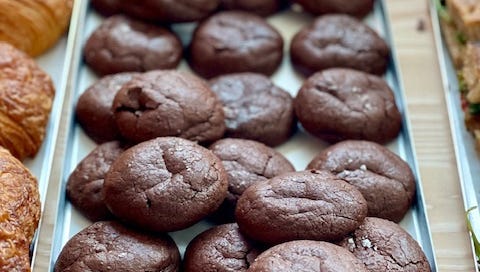The most extraordinary museum
And a bakery, of course! With possibly my favourite chocolate cookie of all time.
This wasn’t the post I had planned for you this week, but I’ve just returned from a special press preview of the most extraordinary new space and I was fed breakfast and moved close to tears multiple times, so I wanted to make sure this didn’t pass you by.
I’m still pinching myself that I ended up on the guest list. I recognised only two people from the food world (sorry I didn’t get to say hi,
!). I would have loved to have known where all the other guests were from, but it wasn’t really that kind of event. The donors’ lunch is happening as I type (was typing!) and the VIP party is this evening.


